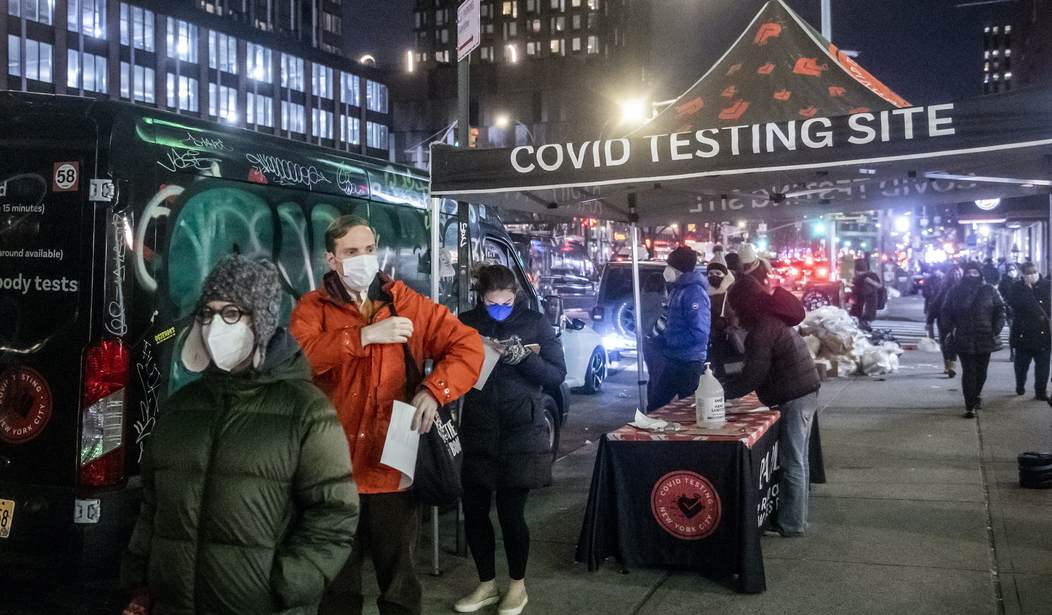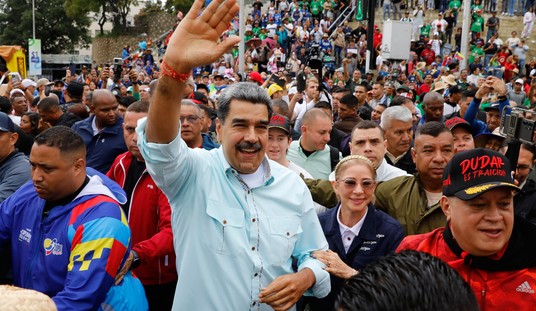It’s pretty clear why it’s getting more contagious. It’s less clear why it’s getting less deadly.
Yesterday the White House’s new COVID coordinator, Ashish Jha, shared some rare good news about the virus. Cases have been rising in the northeast for almost two months. But deaths haven’t.
If you look at the case-fatality rate now in places like NY or MA
Down to 0.3% (that’s deaths today divided by cases 3 weeks ago)
And given we’re missing lots of cases (because of home testing)
CFR is even lower
Remember, throughout the pandemic, CFR has been closer to 1.6%
— Ashish K. Jha, MD, MPH (@AshishKJha46) May 8, 2022
The picture is the same nationally. Between April 1 and April 27, cases in the U.S. roughly doubled. Deaths fell by half over the same period. There’s been hardly any increase in deaths since April 27 either despite the fact that cases have continued trending upward. In fact, we may be in the middle of a wave at the moment without realizing it:
Quest Diagnostics says the #covid19 positivity rate is now in the mid-teens, vs low single digits in March pic.twitter.com/wIejNtGIOR
— Meg Tirrell (@megtirrell) May 5, 2022
Why is COVID killing fewer people now than before?
Two obvious reasons. Virtually everyone in the U.S. has some form of immunity at this point, whether naturally or via vaccine, so our bodies are more prepared for an encounter with the virus. We can fight it off before it turns severe, especially those who’ve been boosted. Therapeutics are also now available to disrupt the course of the illness after infection. It wasn’t long ago that Pfizer’s wonder drug, Paxlovid, was in such short supply that the immunocompromised were being given priority for it, but now it’s sufficiently abundant that scientists are complaining that it’s being underused.
Good vaccines + good medicine = less death. But shouldn’t that also mean fewer infections? If everyone has antibodies now, why are we seeing case numbers rise?
It’s all about evolution, writes David Axe:
More cases but fewer deaths, a phenomenon epidemiologists call “decoupling,” has come to define COVID’s evolution as we muddle through the third year of the pandemic. There are signs decoupling might actually get more extreme. After all, the immunity that leads to decoupling also spurs a virus to mutate more quickly into ever more transmissible lineages.
Immunity encourages mutants, which can increase immunity by seeding antibodies from mild infection. It’s an accelerating positive feedback loop whose products are antibodies and viral lineages.
As the virus circulates among a population in which everyone has some immunity, the only strains that will prosper are the ones lucky enough to gain the ability to evade the human immune response via mutation. The virus is being “honed” through genetic chance to become more transmissible even in a country where nearly everyone has antibodies. But while those antibodies may not be enough to prevent infection by the new strains, the knowledge of the virus that our T-cells and B-cells have acquired through prior exposure is apparently enough to mount an immune response that limits severe illness. Result: Lots of transmission, not much death.
For now. As Omicron continues to spin off new substrains, the feds are worried that the combination of cold weather and continuing viral evolution will produce a mega-wave this winter that could infect up to 100 million people. There already exist lineages of Omicron that are more contagious than the parent strain, which was itself one of the most contagious respiratory viruses ever seen. Something called BA.2.12.1 is now spreading in the northeast and responsible for the recent surge in cases there. And two substrains known as BA.4 and BA.5 are picking up steam in Africa. Those are worth keeping an eye on, as they’re so immune-evasive that even a previous infection by Omicron doesn’t seem to generate much resistance:
A new preprint study, published ahead of peer review, is pointing to why BA.4 and BA.5 are gaining ground: They can escape antibodies generated by previous infections caused by the first Omicron virus, BA.1, the variant responsible for the huge wave of infections that hit many countries in December and January. They can also escape antibodies in people who’ve been vaccinated and had breakthrough BA.1 infections, though this happened to a lesser degree than seen in people who’ve only been infected…
“Our conclusions from this are, first, that Omicron by itself is not a great vaccine, right?” said Alex Sigal, a virologist at the Africa Health Research Institute who led the study. “Just because you were infected does not mean you have a lot of protection from what’s coming next.”…
The BA.4 and BA.5 viruses and BA.2.12.1 have mutations at location 452 of their genomes. This region codes for a part of the viruses receptor binding domain — the part of the virus that docks onto a door on the outside of our cells. The Delta variant and some others have picked up mutations in this location. Researchers believe that changes there help the virus bind more tightly to our cells and hide from frontline immune defenders called antibodies that try to block the virus from invading our cells.
There’s been no spike in deaths lately in South Africa so maybe BA.4 and BA.5 are just another step in the trend towards a more transmissible virus that causes less severe illness. It does leave me wondering about what this means for the next generation of vaccines, though. If Pfizer and Moderna switch over to a vaccine geared towards Omicron, what good will that vaccine do us if BA.4 and BA.5 can break through immunity generated by Omicron itself?
Speaking of mass contagion, America’s most celebrated superspreader event reportedly continues to pile up victims:
I’ve heard from several people that there are a fair number of cases from the White House Correspondents Dinner and that they’re not being reported because—get this, folks—the cases are largely *among reporters*. 🤗
The time has come to deploy the 👀 emoji. https://t.co/b6ue8glimx
— Jeremy Faust MD MS (ER physician) (@jeremyfaust) May 7, 2022
Reporters not reporting on mistakes made by reporters is an old tradition in reporting. Fauci has reportedly complained behind the scenes that the White House set a bad example by letting the WHCD go forward when the virus is still spreading so widely, but at last check not a single person who caught COVID there has been hospitalized. More contagious, less severe, even at the White House Correspondents Dinner.







Join the conversation as a VIP Member